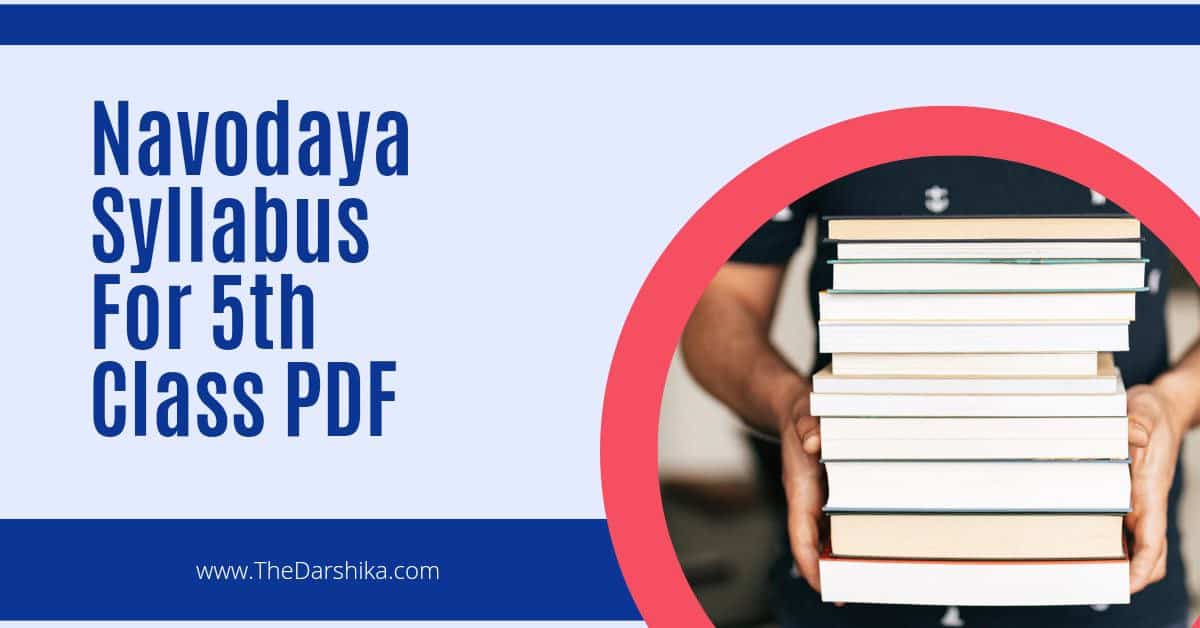Are you preparing to be admitted to Class 6th of Jawahar Navodaya Vidyalaya Samiti? If yes, then you will need Navodaya Syllabus for the 5th Class PDF 2024. This test will mostly contain the syllabus of your class 5th. If you are fully prepared, then you can easily solve the questions.
- Navodaya Question Papers for Class 5 Pdf
- Navodaya Vidyalaya Entrance Exam Books Free Download Pdf in Hindi
- Navodaya Vidyalaya Entrance Exam Books Free Download Pdf in English
But if you have missed the concepts, then you may find it hard to get admission into Navodaya. To help you get the right syllabus, we have brought this PDF. This PDF contains everything you need to learn in order to crack the entrance exam of Navodaya Vidyalaya.
Usually, different schools have different syllabi in Class 5th. That is why students find it very difficult to decide which concept to focus on. This is one of the main reasons students look for precise syllabi on the Internet. We completely understand the situation and put our full efforts into bringing you the right syllabus.
It saves a lot of time. It also gives you a clear idea of what you should expect from the examination. Now, let us dive into the syllabus and PDF without wasting much time.
Download Navodaya Syllabus for 5th Class PDF
If you study the syllabus given in this PDF well, you will be fully prepared for the JNVST Exam. It is very easy to download this PDF from our website. All you have to do is click the given link and get your content. If you face any kind of issues, or your downloading does not start, please refresh your page. You can also confirm if you are connected to a stable internet connection.
- Click Here to Download the PDF.
- Navodaya OMR Sheet 2024 PDF
You will find the complete syllabus at the end of the PDF. Make sure you study hard and learn it completely. You might think it is going to be difficult, but it is not. All you have to do is to be just consistent with your efforts.
Make sure you create a timetable to study for the exam and follow it consistently. If you put effort every day, then we are sure you will be fully prepared for the examination.
Details of the JNVST Exam
As you know, the NVS Class 6 exam is prescribed by Navodaya Vidyalaya Samiti. This is an important step for the students if they want to take admitted in Navodaya Vidyalaya. Students who take this exam were in the 5th class before, and that is why the 5th Class Syllabus becomes so important. You will see three sections in the question paper:
Certainly, here’s the data presented in a table format:
| Type of Test | Number of Questions | Marks | Duration |
|---|---|---|---|
| Mental Ability Test | 40 | 50 | 60 Minutes |
| Arithmetic Test | 20 | 25 | 30 Minutes |
| Language Test | 20 | 25 | 30 Minutes |
| Total | 80 | 100 | 2 Hours |
- Mental Ability Test
- Arithmetic Test
- Language Test
You will have 2 hours to complete this exam. There will be 80 questions of 100 marks in the examination. Make sure you do not get nervous during the examination. The time limit is fixed, so you will have to move your hands a bit fast. Make sure you are well prepared and completely relaxed. That will help you to focus on your exam and questions very well.
Final Words
We hope you will find the Navodaya Vidyalaya Class 5th PDF helpful for the exam. This PDF has the complete syllabus you need to focus on before you sit in the entrance exam. In case you do not have the required study material, you can visit www.TheDarshika.com to get what you need.
We are known for providing study material for students. You can get PDFs for notes, books, worksheets, etc., from our website. Share the content with your friends to help them learn as well. In case you find any difficulty, please let us know in the comment section.

